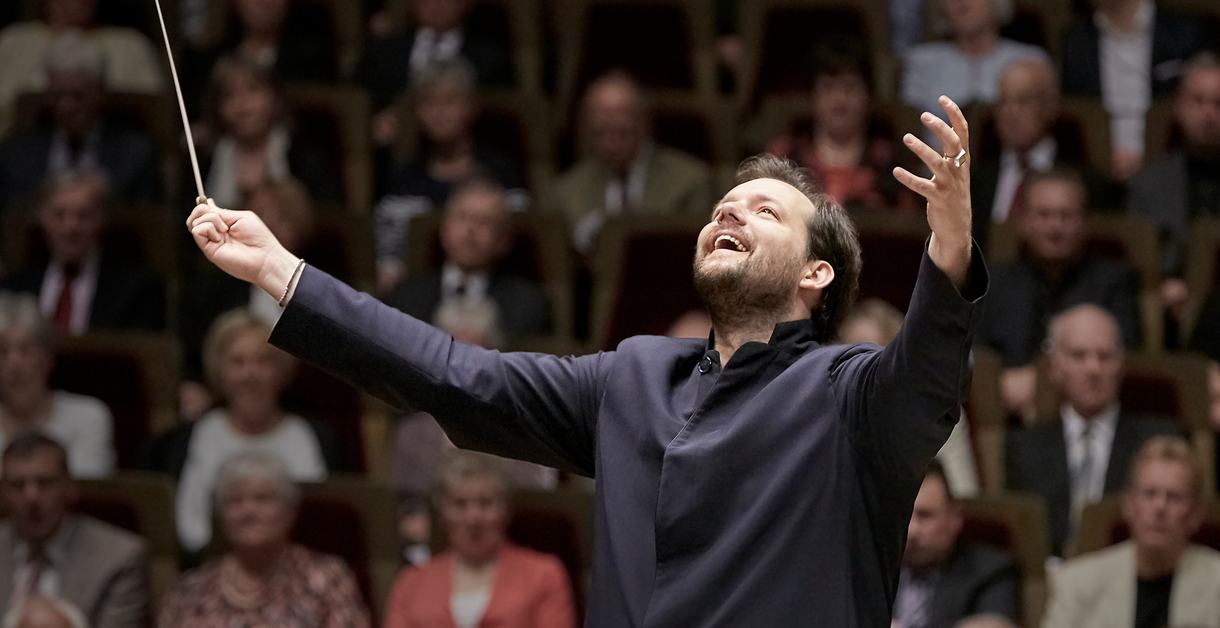Gustav Mahler's Symphony no 5 makes a welcome addition to the growing series of Mahler recordings with Daniel Harding and the Swedish Radio Symphony Orchestra on Harmonia Mundi. Harding has been conducting this symphony for years, with many orchestras, so hearing it with the unique sound of the SRSO offers insights that enhance understanding. This symphony has long been one of Harding's favourites, often combined in concert with Purcell or Rameau, emphasing its poise and structure.
The first movement is a Trauermarsch, hence the steady, measured pace. Mahler grew up in Iglau (Jihlava) where there was a military garrison where no doubt he would have been aware of soldiers in procession, even in times of peace. So this isn't a battlefield funeral so much as a funeral remembered through the prism of time, and as a symbol of the inevitability of death. Thus the trumpet call, trombones, horns and tuba in formation, strings and percussion behind. One of the strengths of this orchestra is that they sound like individuals in ensemble, not too polished, certainly not too rough, but "human". As the pace picks up, the strings, and winds scream, unleashing a torrent of protest, cut short by firm pounding chords. The march returns, more penitent than before, with a note of wistfulness which so often in Mahler means looking backwards on better times. Hushed drum beats and sweeping string lines, signalling change. The first theme returns, but the trumpet calls forwards, a courageous voice all alone. Harding observes the structure in the first movement so it feels coherent, a procession with a clear start, pause for reflection and return to base. I don't like listening to single movements out of context, but in this case, it's rewarding.
This brought out the connections between the second movement, marked Stürmisch bewegt, mit größter Vehemenz and the first. Both are in minor keys, and the "stormy" nature in the second is further moderated by the quieter central section, where the "sighing" reflectiveness from the first movement finds greater expression. Again, the mood is propelled forwards by turbulence: a nice tension in this performance between the looking-back (almost waltz-like) and the inexorable pulling ahead. Trumpets and other brass herald change, as the movement heads to expansive conclusion, though, just as in the first movement, solo voices have the last word.
The third movement marks another change. Now the mood is major and more assertive. One of the more unusual Mahler 5's I've heard in recent years was Jakub Hrůša and the Philharmonia Orchestra (read more here). That was perceptive, recognizing that Mahler never lost the Wunderhorn impulse : his work is too coherent, too "whole" to compartmentalize in simple terms. Harding brings out the earthy vigour in the scherzo. The introduction zips along, full of exuberance. There are dances - not just waltzes and Ländler but pas de deux between groups of instruments. On this recording, the dialogue between the solo violin and the other strings is particlarly well defined ; delicacy where it matters. In the middle section, the pace intensifies, with a "swaggering" theme that might suggest rustic dance with its connotations of fertility. But yet again, the trumpet calls forth, ushering in change. For a moment there is stillness, marked by a woodwind, before a brief final flourish.
In the adagietto, the strings creating textures that were mysterious, yet also warm. This is another dialogue, this time between the strings, caressing the harp, in tender embrace. as if in embrace. Willem Mengelberg described it as a "declaration of love for Alma" which is no doubt true, especially when the movement is done as a stand alone. But on a deeper level it connects to the love of life itself which pervades Mahler's work from beginning to end, Alma being muse and symbol of creative renewal. This wider interpretation links the adagietto to the rest of the symphony, following as it does the scherzo with its images of vitality, and the Trauermarsch and its companion, the second movement, with their images of death and forced change. These concepts are drawn together in the Rondo-finale where themes that have gone before re-surface, regenerated. While the symphony began with a march, it ends with a rondo, a lively dance, intertwning different elements in contrapunctual patterns. Horns, trumpets and woodwinds introduce the full-throated first theme. The boisterous spirit continues throughout. While this symphony was in the early stages of gestation, Mahler nearly died of a rupture. Thus it's perfectly reasonable to interpret it as a celebration of life itself : the vigour of the scherzo and the "love theme" of the adagietto both consistent with the concepts of renewal which run through all Mahler's other symphonies.
When Harding, aged 19, was hired by Claudio Abbado as his personal assistant, Abbado made him work on what would have been Mahler's Tenth symphony, which at the time, few others conducted. It was wise training because it taught Harding from the start to approach Mahler's work as a whole, from beginning to end. Harding's Mahler 10 (especially with Berlin) is outstanding. From that, and from his understanding of the grand span it grew from, we have this Mahler 5th with its keen appreciation of structure and form.







